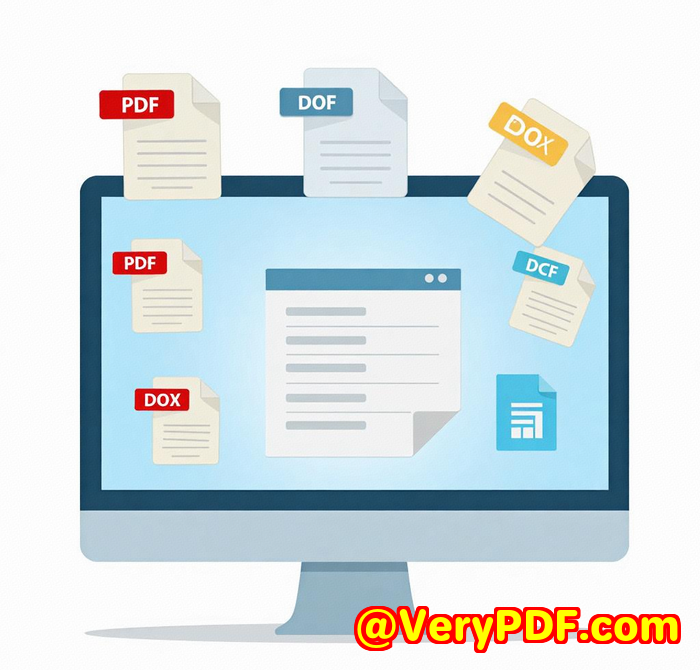Why VeryPDF JavaScript PDF Annotator Source Code is Ideal for Insurance Companies to Annotate Policy Documents
Meta Description:
Insurance teams can now annotate policy documents in-browser, across devicesno plugins needed. Discover how VeryPDF's annotation source code makes it seamless.
Every underwriter hates this moment.
You're reviewing a 60-page scanned insurance policy. You spot an exclusion clause that contradicts a prior endorsement. You try to flag itbut your PDF viewer? Useless. It's either locked down or doesn't support markup.

That's what used to happen to me almost weekly.
I was constantly switching between PDFs, Word docs, and emails trying to make sense of policy documents, highlight crucial sections, and collaborate with colleagues. We needed annotations. Not just comments in a margin. Actual in-line markup. Highlighting. Drawing. Shared notes.
And we needed it across Windows, Mac, iPads, and web portals used by our clients.
After testing a bunch of tools (some overpriced, others bloated), VeryPDF's JavaScript PDF Annotator Source Code turned out to be exactly what we needed.
The solution that finally made sense
I stumbled on VeryPDF JavaScript PDF Annotator Source Code License while looking for something embeddable. Something browser-based. And something with zero plugins.
Most other annotation tools I tried required a server backend or native desktop apps, which didn't fit our hybrid environment.
VeryPDF was different.
It's a pure JavaScript and HTML5 annotation systemyou get the source code, meaning you can embed it in your own web app, hook it into your database, customise every button, every behaviour.
It works everywhere: Windows, Mac, iOS, Android. No installs. No plugins. Just a browser.
What makes it killer for insurance use cases?
Here's what made it click for us:
1. Real-time annotation in the browser
Our underwriters now open a policy PDF in our internal portal and just start annotating. No downloads. No uploads. Just:
-
Highlighting exclusions and terms.
-
Adding text comments to clauses.
-
Drawing arrows to connect clauses across pages.
-
Burning annotations into the file when final.
And because it supports layered markup, multiple team members can add notes without overwriting each other.
2. Full support for all our document types
We deal with more than just PDFs.
Underwriting reports come in DOCX. Claims photos in PNGs. CAD schematics for property inspections.
This tool supports 50+ file types, including:
-
PDF, DOCX, XLSX, PPTX
-
PNG, JPEG, TIFF
-
DWG, PCL, even PSD (via VeryPDF Cloud API)
It's not just a PDF viewer. It's a document markup powerhouse.
3. We control the workflow
Since we have the source code, we wired the annotation module right into our claim processing pipeline:
-
Review policy Annotate clause Save to claim record
-
Claims adjuster opens it Sees all notes and markups Adds final decision
We also added custom buttons to export annotated files, email directly from the viewer, and restrict editing after approval.
This level of control just isn't possible with third-party SaaS viewers.
Why the alternatives fell short
Adobe? Overkill. Licensing gets messy.
Online tools like Kami or Lumin? Great for schools. Not built for enterprise.
Other open-source viewers? Buggy. Half-baked features. No Office file support.
With VeryPDF:
-
Performance is smooth, even on 100+ page files.
-
Works with our own servers, so no data leaves our control.
-
No need for backend rendering or special viewer plugins.
-
Annotations preserve the original document until you're ready to burn them in.
Final thoughts
If you work in insurance, you know how chaotic document collaboration can get.
Policies are long. Clauses are complex. And any misinterpretation can lead to costly errors.
VeryPDF JavaScript PDF Annotator helped us build a system where our whole team can:
-
View, markup, and comment on any document
-
Collaborate in real time
-
Integrate annotation into our claim and policy workflow
-
Keep everything browser-based and platform-independent
I'd recommend it to any insurance company that deals with large volumes of policy documentation or claims paperwork.
Give it a shot here:
Custom Development Services by VeryPDF
Got unique needs?
VeryPDF offers custom-built solutions tailored for your organisation. Whether you're in insurance, legal, finance, or engineering, their dev team can build tools that fit your stack.
They support everything from Windows Virtual Printer Drivers to PDF monitoring systems, OCR engines, and cloud-based document processing.
Tech stack includes:
-
Python, C++, JavaScript, C#, .NET, PHP
-
Windows, Linux, macOS, iOS, Android
-
PDF, PCL, Postscript, DOCX, XLSX, DWG, TIFF, and more
Need secure annotations, API integrations, or custom viewers?
Hit them up at http://support.verypdf.com/ and outline your project.
FAQs
1. Can I integrate this annotation tool into our existing insurance CRM?
Yes. The source code lets you embed the viewer directly and customise it to fit your CRM.
2. Does it support mobile devices for field agents?
Absolutely. It's HTML5-based and works smoothly on mobile browsers, including iPads and Android tablets.
3. Can annotations be saved or burned into the PDF?
Yes. You can either export the file with layered annotations or flatten (burn in) them permanently.
4. How does it handle sensitive data?
Since it's self-hosted, your documents never leave your environment. You maintain full data control.
5. What file types can be annotated besides PDFs?
Over 50 types including DOCX, XLSX, PNG, TIFF, CAD files, and more (with VeryPDF Cloud API).
Tags / Keywords
-
JavaScript PDF annotation source code
-
Insurance document markup tool
-
Annotate PDFs in browser
-
Policy document collaboration
-
VeryPDF HTML5 PDF viewer